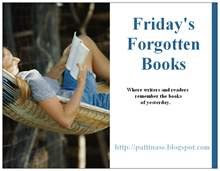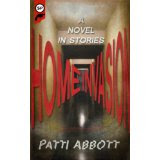

HOW I CAME TO WRITE THIS NOVEL
By Kenneth Wishnia, author of THE FIFTH SERVANT (Harper Collins; February 2011, but perfect for Passover themes!)
This is the book I was born to write.
Seriously.
Like many of my generation (we’re talking teenagers in the 1970s), my friends and I were attracted to the quasi-medieval and Celtic mythological worlds of Tolkien, LeGuin, Led Zeppelin, and other alternatives to the drab reality of fading post-1960s hippiedom. I’ve wanted to write a story set in the Middle Ages since I was about 13, when I was living in France (my mom was doing her doctoral research on French labor history) with direct access to genuine medieval castles, cathedrals and other locales, as well as the Cinémateque Francaise, which is how I managed to watch the 1920 German expressionist version of The Golem on the big screen in all its terrible glory. (Talk about an inspiration!)
But something funny happened on the way to my “medieval” story. First of all, when I began to do the research for this book, I found that the Renaissance offered a lot more possibilities for a compelling story than the Age of Faith. If I had set this novel in the 14th century, when Christian mobs were convinced that the Jews were responsible for the Black Death, the battle lines would have been much more clearly drawn: many Christians of that period viewed the Jews as inhuman creatures, literally the spawn of Satan. So my story would have been much more clear cut, much more good vs. evil, white hats vs. black hats, us vs. them.
But the Renaissance ushered in numerous upheavals within the Church, and a shift to a mercantile economy, and the dominant attitudes towards Jews began to change from sheer racial hatred to more of a “Gee, I don’t feel like paying back my debts. Let’s go ransack the ghetto and burn the ledger books.” In fact, the Jews were expelled and invited back to Prague so many times that Rabbi Judah Loew (1520?-1609) gave a sermon in 1573 comparing the situation to fickle lovers quarreling. (A partial list of expulsions, attempted expulsions and pogroms in Prague alone yields 24 occasions between 1494-1568, or an average of one every 3 years.)
So moving the time period up to the Renaissance provided a lot more room in the story for complexity and ambiguity, qualities which help distinguish quality “literary” writing from run-of-the-mill genre writing.
In that sense, The Fifth Servant is the culmination of years of work developing my craft as a crime writer and as a scholar in the field of Judaic studies.
I drew on both of these traditions to create a story that combines a refined literary style with a page-turning plot that will appeal to a broad range of readers.
One of the reasons for writing this book was just plain balance: So many historical mysteries fall under the genre heading of “cozies”--light-hearted plots in which evil is depicted as an aberration that can be exposed and excised, allowing the world to return to a state of normalcy, even innocence. Well, the Jewish experience of European history is anything but cozy and innocent, and I wrote this novel partly in reaction to that.
The period I chose--March, 1592--was attractive for many reasons. First and foremost, the great Rabbi Judah Loew of the Golem legends was active in Prague at the time. It was also a time when people were on the cusp of modernity, but they weren’t there yet: science was advancing, but the discoveries of Galileo still lay more than 15 years in the future. People still believed in evil spirits and magical cures, and interfaith marriage was punishable by death. (Full disclosure: I am married to a Catholic. So there. Ha ha ha.) In fact, our relationship inspired the “forbidden love” subplot in the novel. And I have to admit that I sometimes get a bit of a thrill from the knowledge that our “cohabiting” would have caused major riots 400 years ago.
I also grew up in a thoroughly secular household where the primary emblems of Jewish culture were bagels and Woody Allen movies, which isn’t a bad start, but it meant that I had to do a great deal of research to write this book. I studied the Mishnah, Talmud, Midrash, Jewish history, Czech history--in all, I gathered 1,200 pages of single-spaced notes, 3 handwritten notebooks, and a 42-inch pile of drafts [see attached photo].
This research represents the Jewish education I never had. Yet I also managed to include a fair amount of humor in it as well. After all, the Jews have a long tradition of using humor in the direst of situations, which in some ways resembles the gallows humor in the cop novels I’ve written. (Yes, I actually found places for “cop humor” in 16th century Prague.) Some things never change. And oddly enough, one of the goals of the historical novel is to point that out.
Kenneth Wishnia was born in Hanover, N.H. His first novel, 23 Shades of Black, was nominated for the Edgar and the Anthony Awards and made Booklist’s Best First Mystery list, and was followed by four other novels, including Soft Money, which Library Journal listed as one of the Best Mysteries of the Year, and Red House, which was a Washington Post Book World “Rave” Book of the Year in 2002. His short stories have appeared in Ellery Queen’s Mystery Magazine, Alfred Hitchcock’s Mystery Magazine, Murder in Vegas, Queens Noir, and elsewhere.
















3 comments:
I've read a couple of his short stories in this series and they were really good reading, so I'm sure this will be worth checking out as well.
Jeff M.
"The drab reality of fading Hippism." Exactly. I agree 100 percent.
When did he start using capital letters in his name?
Post a Comment